Seat Back Failure
Automobile manufacturers are tasked with abiding by safety regulations and standards to ensure that cars are not dangerous and protect the inhabitants as best as they can. This is why seat belts, air bags, automatic brakes, and other technologies were developed and implemented. However, there was a time when safety was not at the top of the list and many manufacturers simply met the minimum requirements for their cars, all in an effort to cut costs and increase profits. This proceeded to endanger the lives of millions of people. One chief item that was seemingly ignored and not updated was the seat back, which is found in every vehicle.
 The primary goal of the seat back is safety. It is designed to reduce momentum from impacts in any direction, but is most effective in rear end and head-on collisions. The seat back’s rigidity is meant to prevent the passenger from slamming into the interior of the vehicle or from being ejected from the vehicle altogether.
Laws like the Federal Motor Vehicle Safety Standard 207 in 1968 outline the safety regulations for cars and seat backs. Seat backs under this law were meant to be strengthened to prevent or “minimize the possibility of their failure by forces acting on them as a result of vehicle impact.”
This law required that seat backs must be able to withstand 270 pounds of force from an impact. This is directly disproportionate with the requirement for seat belts, which are required to withstand 6,000 pounds of force. Therefore, mathematically speaking, the seatbelt would be able to hold someone in place if the force of an impact is over twice as strong as the seat back can handle, but the seat back would likely break or be destroyed.
The primary goal of the seat back is safety. It is designed to reduce momentum from impacts in any direction, but is most effective in rear end and head-on collisions. The seat back’s rigidity is meant to prevent the passenger from slamming into the interior of the vehicle or from being ejected from the vehicle altogether.
Laws like the Federal Motor Vehicle Safety Standard 207 in 1968 outline the safety regulations for cars and seat backs. Seat backs under this law were meant to be strengthened to prevent or “minimize the possibility of their failure by forces acting on them as a result of vehicle impact.”
This law required that seat backs must be able to withstand 270 pounds of force from an impact. This is directly disproportionate with the requirement for seat belts, which are required to withstand 6,000 pounds of force. Therefore, mathematically speaking, the seatbelt would be able to hold someone in place if the force of an impact is over twice as strong as the seat back can handle, but the seat back would likely break or be destroyed.
 In addition to front seats, rear seats can also be defective. Some rear seats have mechanisms that allow them to fold downwards to prevent easy access to the trunk or so additional materials can be stored safely. Some of these mechanisms will collapse upon impact, causing those in the backseat to suffer injuries.
In addition to front seats, rear seats can also be defective. Some rear seats have mechanisms that allow them to fold downwards to prevent easy access to the trunk or so additional materials can be stored safely. Some of these mechanisms will collapse upon impact, causing those in the backseat to suffer injuries.
 Although the cost of installing seat back locks or trying to develop more rigid seats was astonishingly cheap, and despite the relatively large number of child deaths attributed to seat back failures, the NHTSA did not take any steps to mandate updated guidelines and the manufacturers did not take any steps to improve safety. This is a fault on both the administration and the manufacturers.
Lastly, even though a lot of safety regulations were made in the years following Safety Standard 207, the fact remains that there are still recorded deaths and injuries that are caused by defective seat backs. This does not include the deaths and injuries that are not immediately known to be seat back failures due to the fact that many organizations do not report the correct causes or misattribute them to other factors.
Although the cost of installing seat back locks or trying to develop more rigid seats was astonishingly cheap, and despite the relatively large number of child deaths attributed to seat back failures, the NHTSA did not take any steps to mandate updated guidelines and the manufacturers did not take any steps to improve safety. This is a fault on both the administration and the manufacturers.
Lastly, even though a lot of safety regulations were made in the years following Safety Standard 207, the fact remains that there are still recorded deaths and injuries that are caused by defective seat backs. This does not include the deaths and injuries that are not immediately known to be seat back failures due to the fact that many organizations do not report the correct causes or misattribute them to other factors.
What Is The Seat Back?
The seat back is what most individuals would colloquially call the “seat.” It is the upright position of the seat as opposed to the cushion upon which you sit. The seat backs are capable of reclining, while the bottom portion of the seat is largely stationary and can only be moved up and down or forward and backward on a frame. The primary goal of the seat back is safety. It is designed to reduce momentum from impacts in any direction, but is most effective in rear end and head-on collisions. The seat back’s rigidity is meant to prevent the passenger from slamming into the interior of the vehicle or from being ejected from the vehicle altogether.
Laws like the Federal Motor Vehicle Safety Standard 207 in 1968 outline the safety regulations for cars and seat backs. Seat backs under this law were meant to be strengthened to prevent or “minimize the possibility of their failure by forces acting on them as a result of vehicle impact.”
This law required that seat backs must be able to withstand 270 pounds of force from an impact. This is directly disproportionate with the requirement for seat belts, which are required to withstand 6,000 pounds of force. Therefore, mathematically speaking, the seatbelt would be able to hold someone in place if the force of an impact is over twice as strong as the seat back can handle, but the seat back would likely break or be destroyed.
The primary goal of the seat back is safety. It is designed to reduce momentum from impacts in any direction, but is most effective in rear end and head-on collisions. The seat back’s rigidity is meant to prevent the passenger from slamming into the interior of the vehicle or from being ejected from the vehicle altogether.
Laws like the Federal Motor Vehicle Safety Standard 207 in 1968 outline the safety regulations for cars and seat backs. Seat backs under this law were meant to be strengthened to prevent or “minimize the possibility of their failure by forces acting on them as a result of vehicle impact.”
This law required that seat backs must be able to withstand 270 pounds of force from an impact. This is directly disproportionate with the requirement for seat belts, which are required to withstand 6,000 pounds of force. Therefore, mathematically speaking, the seatbelt would be able to hold someone in place if the force of an impact is over twice as strong as the seat back can handle, but the seat back would likely break or be destroyed.
Find out more about how we can help you. Call (855) 339-8879 to speak with a representative now.
Seat Back Defects
Seat backs may have defects that are present at the time of creation, or they may eventually wear down over time with overuse. Seatbacks have undergone a number of changes, some being created with a very small amount of padding over a metal frame, while others have used more rigid plastics and cushioning. In general, there is a lack of strength and support that prevents the seat back from working properly. A defective or weak seat back can completely ruin the seat belt and restraint system. Some examples of the defects that seat backs may have include:- Frames that are bent or not properly affixed to other parts of the seat, which can result in breaks and looseness
- Hinges that allow too much movement of the seat back and do not offer protection in the event of an impact
- Anchors that are not fitted to the seats themselves and can easily slip out of place
- Brackets that do not hold the parts of the seat back together and cause collapses and bends
 In addition to front seats, rear seats can also be defective. Some rear seats have mechanisms that allow them to fold downwards to prevent easy access to the trunk or so additional materials can be stored safely. Some of these mechanisms will collapse upon impact, causing those in the backseat to suffer injuries.
In addition to front seats, rear seats can also be defective. Some rear seats have mechanisms that allow them to fold downwards to prevent easy access to the trunk or so additional materials can be stored safely. Some of these mechanisms will collapse upon impact, causing those in the backseat to suffer injuries.
Defective Seat Back Statistics
Since the 1968 law, there have been various studies done that measure the usefulness and protective qualities of seat backs. There have been seat back locks installed on some seats that prevent the seats from being moved until a lever is depressed, while others do not have any such mechanisms. Some key points of those studies can be found below.- In sled tests where the vehicle was traveling 30 mph or higher, 88% of cars had the seat backs torn loose
- The average lifetime cost to install a seat back lock was $14.14
- In 2004, over 30 years after the standards for seat backs were initiated, the NHTSA (National Highway Traffic Safety Administration) suspended its rulemaking and stated that additional research and data would need to be made available in order to revisit the subject, despite climbing numbers of child fatalities due to faulty seat backs
- From 2003 to 2016, over 300 deaths have been attributed to seat back failures, while 3,000 injuries have been listed as well
 Although the cost of installing seat back locks or trying to develop more rigid seats was astonishingly cheap, and despite the relatively large number of child deaths attributed to seat back failures, the NHTSA did not take any steps to mandate updated guidelines and the manufacturers did not take any steps to improve safety. This is a fault on both the administration and the manufacturers.
Lastly, even though a lot of safety regulations were made in the years following Safety Standard 207, the fact remains that there are still recorded deaths and injuries that are caused by defective seat backs. This does not include the deaths and injuries that are not immediately known to be seat back failures due to the fact that many organizations do not report the correct causes or misattribute them to other factors.
Although the cost of installing seat back locks or trying to develop more rigid seats was astonishingly cheap, and despite the relatively large number of child deaths attributed to seat back failures, the NHTSA did not take any steps to mandate updated guidelines and the manufacturers did not take any steps to improve safety. This is a fault on both the administration and the manufacturers.
Lastly, even though a lot of safety regulations were made in the years following Safety Standard 207, the fact remains that there are still recorded deaths and injuries that are caused by defective seat backs. This does not include the deaths and injuries that are not immediately known to be seat back failures due to the fact that many organizations do not report the correct causes or misattribute them to other factors.
Recalls for Defective Seat Backs
For the most part, automobile manufacturers will not recall automobiles until it is apparent that the safety hazard is too glaring to ignore or affects too few cars to warrant a large-scale return. In the last decade, thousands of vehicles have been recalled because of seat back defects. A few include:- Chevrolet and GMC both recalled their Silverado and Sierra pickup trucks after it was discovered that the seat backs were defective and that the head rests did not stay in place; nearly 20,000 vehicles were recalled
- Ford recalled Freestar and Mercury Monterey minivans whose third-row seat backs were liable to start rusting and would eventually become too loose to stay in place
- Tesla recalled Model S cars whose rear seat latches did not hold in the event of an accident, and the rear seats would subsequently shift and move during crashes an impacts
- Nissan recalled over 10,000 Juke vehicles because the rear seat backs were not properly welded to their frames, which would cause the seats to dislodge in the accident and endanger those sitting in them
Injuries from Defective Seat Backs
Defective seat backs can cause many kinds of issues in car accidents. Individuals who are sitting in the seats may be thrown into the rear or ejected through the windshield despite the strength of the seat belt. There is also the chance that the airbag will not be able to reach the victim. This raises the risk of injuries by a large amount. Additionally, people who are in the backseat at the time of the accident could be hurt because of the bodies from anyone in the front seats. Many individuals suffer brain injuries because of the sudden impact; children and infants in car seats are especially at risk, and dozens of children have died as a result of defective seat backs. The injuries that can result from defective seatbelts include:- Concussions
- Closed head injuries
- Brain damage
- Traumatic brain injuries
- Facial damages
- Sternum and collarbone damage
- Dislocations and sprains
- Muscle damage
- Nerve damage
- Internal organ injuries and internal bleeding
- Fractures
- Broken bones
- Crushing injuries
- Puncture wounds
- Lacerations and abrasions
- ACL, MCL, and LCL injuries in the knee
- Hip damages
- Paraplegia
- Quadriplegia
- Coma
- Death
Learn more about your legal options: call (855) 339-8879 to speak with a representative now.
Liability of Auto Manufacturers
Defective seat backs can be attributed to the negligent actions of the auto manufacturer. Businesses should be held liable for their products and the results from potential mishaps. In the case of automobiles and their component parts, manufacturers need to be held extremely accountable due to the large injury risk involved with a broken or malfunctioning item. In order to file a product liability claim against an automobile manufacturer for a defective seat back, you must be able to show one of three points.- There was a design flaw when creating the item
- There was a manufacturing error that cause the seat back to be defective
- There were no warnings or hazard signs on the item that alerted users and drivers to the potential risks
Procedure after a Car Accident
If you have been in a car accident and a seat back failed or malfunctioned, resulting in injuries, you should be sure to protect your health and get away from harm. You should also prepare for a lawsuit to get the compensation you deserve. The very first step you should take is going to the doctor or calling the paramedics for treatment. You will need to get seen to check on the status of your injuries and to determine if there are any other hidden damages that are masked by adrenaline or merely not noticed. The reason it is wise to get treatment quickly is for more than your health – it is also beneficial to your lawsuit. If there is no gap between the injury and the treatment, the insurance agent will be less likely to be dubious over it and will be more open to negotiations. You should be sure to keep the medical receipts, doctor’s notes, pay statements, prescription notes, and anything else you receive from the hospital or from treatment. It will be submitted to the insurance company to determine your compensation. You should then take pictures of your injuries to show the extent to which you were hurt. It is also beneficial to take pictures of the damage to your vehicle, the defective seat back, and scene of accident, the damage to the other vehicle, and anything else that you will not be able to provide to an attorney in hand. You can write down the contact information and insurance details of any party that was responsible for the accident. You should have the correct intended target for a lawsuit. Other perspectives and support will do a lot for your claim. This is why it is recommended that you go to the passengers of other cars, or interview bystanders and eyewitnesses, to get additional testimonies and statements to bolster your lawsuit. If you have the warranty for your vehicle or for any replacement parts like the seat back or lock, you should hold on to them. Receipts and other documents will always be crucial t your claim. If the police showed up to the scene of the accident because of the injuries that were suffered, you should request a copy of the police report once it has been finalized and submitted to the precinct. Lastly, it is in your best interests to hire a skilled lawyer with experience in seat back failure cases. Often, attorneys will take on any claim that comes their way but will not pay enough attention to the clients and their needs. You should search for a lawyer who is highly rated who can handle your claim. You may not have the knowledge, negotiating skills, time, energy, or money to go through with a lawsuit. In fact, many victims wind up with more damages or a lengthened recovery time because of the stress of the lawsuit.Value of a Seat Back Failure Lawsuit
The worth of a seat back failure accident lawsuit cannot be accurately determined with a cursory glance. The value of your case will be determined by an insurance agent instead, one who has reviewed the case file and evidence and has considered your counters before making an offer. Insurance agents, though, will try to do everything can to get an advantage and not have to pay out any claims. The insurance agent will look at the extent and severity of your injuries and whether or not they had a lasting effect on your health and career. If they took a while to recover from or if they left you with permanent damage, you could face a larger settlement than if they were minor. He will also look at your job type and age, as well as how liable you were for the incident. If you caused the accident in the first place, the insurance agent may outright deny your claim. Some cases have settled for over $100,000,000, which have resulted in deaths due to overwhelming negligence. Others have settled for less than $10,000 because of a lack of serious injuries. A few example cases include:- $9,000,000 Verdict: A young woman was left paralyzed from the legs down after a rear end collision. Her seat back fully collapsed in the accident and she was thrown into the rear of the vehicle, where she suffered numerous lower back and leg injuries. She is not expected to ever walk again.
- $2,000,000 Settlement: A woman was a passenger in a car accident. The car was struck and rolled over. While the car was rolling, the seat back collapsed and caused her to slip from the open door. She was kept in place by her seatbelt but was still not fully inside the car. As a result, she suffered numerous injuries and wound up quadriplegic after the incident.
- $2,750,000 Settlement: A man was in his vehicle when he was rear-ended by another car that was going about 40 mph. The impact caused the seat back of the man’s car to fold in and break. He was thrown backwards into the rear of the car where he suffered a cervical injury and lost all motor function below the neck. The auto company was found to have known about the defect but took no action to stop it.
Common Defenses
When involved in a lawsuit, the auto manufacturer’s defense attorney will often claim that the seat back was going to fail or collapse anyway at certain impacts or speeds. The fact that it collapsed just means that the impact exceeded the threshold needed to break the seat back, and thus, no liability should be assigned to the manufacturer. They may say that the vehicle is made of fiberglass and plastic and is not an Army vehicle that can withstand explosions and high forces of impact. This argument can be addressed by measuring the force of the impact. If the force of the impact was lower than the minimum threshold required of testing and the seat back still broke, it is reasonable to assume that the seat back was defective. Defense attorneys will also claim that the impact was going to cause damages anyway. If the seat back didn’t fail, then there was going to be another damage caused by the stationary position of the victim, such as being hit by the broken window or by being thrown forward into the steering wheel. These conjectures, though, are not based in the reality of what happened. In order to combat such defenses, you will need a skilled lawyer on your side representing you and fighting for your rights.Statute of Limitations to Sue for a Defective Seat Back
The statute of limitations to sue for a defective seat back is 2 years from the date of the injury. If you do not file a claim within that period of time, you will be prevented from doing so in the future. The statute of limitations is in place to ensure that you do not wait too long to sue; this may cause evidence to be lost or corrupted and it may result in the other party not having the means to cover any compensation. The sooner you take legal action, the better off you will be and the more success you will likely have with your claim. There are a few ways for the statute of limitation to be temporarily extended, though. The most common occurs when an individual is under the age of 18 years old. Minors cannot sue, so the statute would be suspended until the day of the minor’s 18th birthday. He will then have 2 years to sue. Further, the mentally or physically incapacitated cannot sue in good conscience. They may be left in comas or may have suffered severe emotional distress after the accident, which would prevent them from having a sound enough mind or body to file a claim. Once they return to functionality, they can file claims. Moreover, the defendant must be present in the state. This is not usually a problem for product liability cases, as the manufacturer is not suddenly going to shift operations somewhere else. However, if one of the opposing parties is another driver, he must stay in the state. If he leaves, your statute of limitations will be suspended until he returns. Many individuals do not know that there is a statute of limitations for their claims. They routinely miss the opportunities to sue. To ensure that you do not miss a single deadline, contact our firm today, and we will work around the clock to make sure you meet your deadlines.Compensation from a Seat Back Failure Accident
If you were injured in an accident because of a defective seat back, you can collect compensation for your damages. The compensation can vary in type and amount, but we believe that you can win the following:- Medical expenses from the past and the future for surgery, hospitalization, ambulatory transportation, medication, physical therapy, and more
- Property damage to replace car parts, fix your vehicle, replace lost or broken items, and more
- Lost income to cover the wages you missed out on from the past and future due to the injuries and recovery time
- Pain and suffering for emotional trauma, anxiety, PTSD, fear, psychological anguish, and more
- Wrongful death damages if a family member or loved one died in the accident, which could result in burial and funeral fees, pre-death pain and suffering and medical bills, loss of consortium, loss of expected savings and inheritance, and more
Choosing Our Firm
The Downtown LA Law Group has decades of combined experience handling car accident claims, automobile product liability lawsuits, and more. We know that Chevy Volts, Ford Explorers, Honda Civics, and more have all been found with faulty seat backs. We are known for our high level of success, our grittiness, and our aggressive attorneys. We do not waste time on cases and we will do everything we can to bring you the restitution you deserve. Contact our law firm in Los Angeles to speak with a qualified lawyer about your seat back failure case. We will tell you about the legal process, question your evidence, and help you understand what will be needed to move forward. You’re welcome to ask us questions about anything at all – we are available around the clock, 24/7. We will also give you our zero fee guarantee, which says that you won’t have to pay us any money for our services. We will cover the costs of the case, hire expert witnesses, and sift through the evidence free of charge. Our payment will only come if we win your claim, and the money will be taken out of the settlement or verdict we bring you from the insurance agency or courthouse. If we lose, we take nothing at all, and you will be off the hook. At no point will you use your owns savings to pay for legal assistance. Don’t hesitate to contact the Downtown LA Law Group to speak with a car set back accident lawyer today.
By submitting this form, you agree to receive telephone calls and text messages at anytime, which include hours outside of business hours (8:00 am PST – 9:00 pm PST). This is so that we may reach you as soon as possible in order to consult on your potential case.








